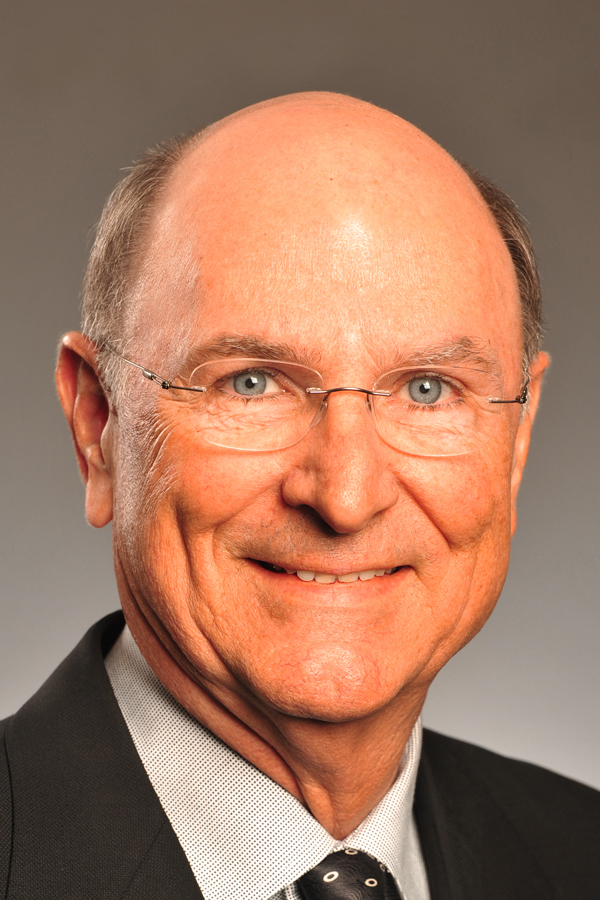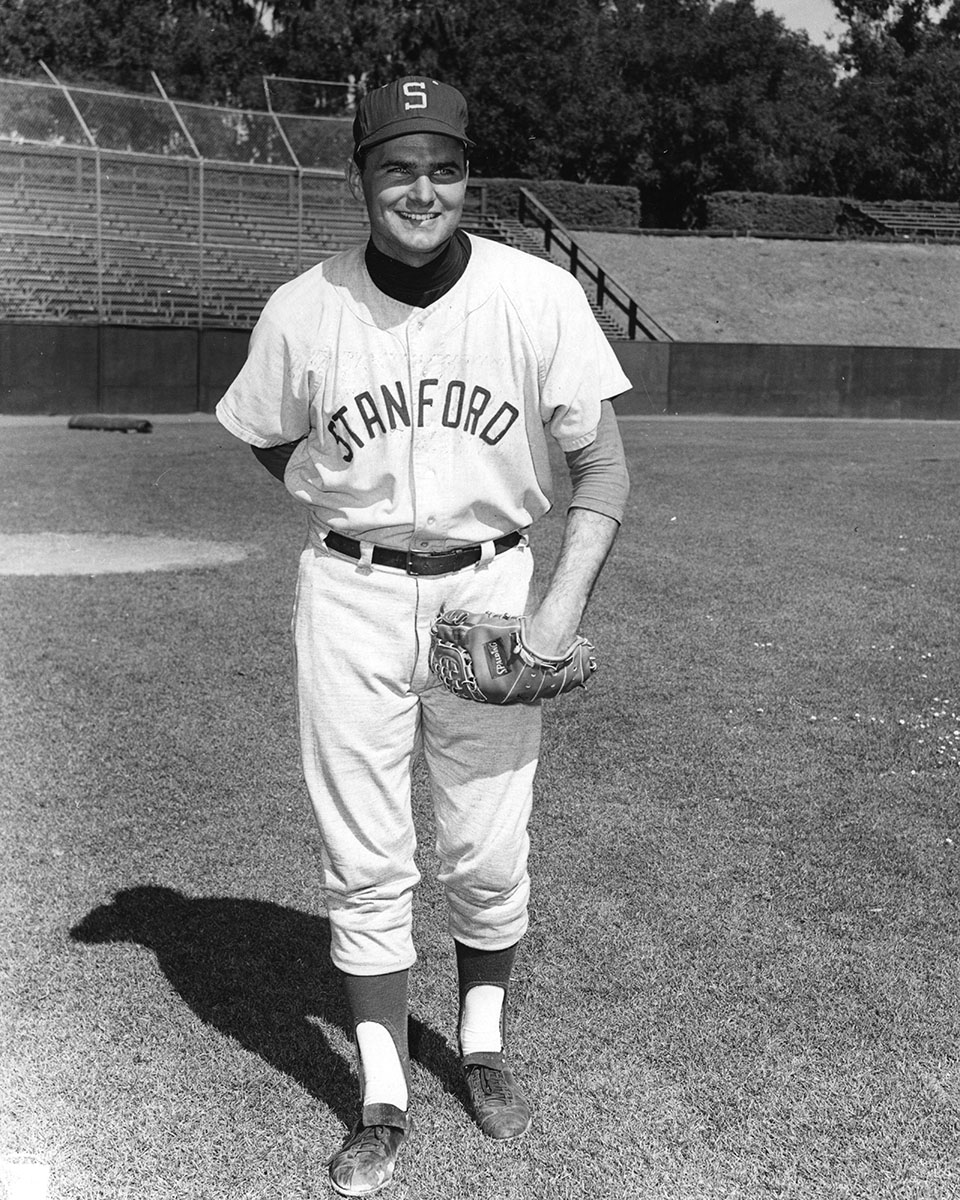Harvey Shank
 Harvey Shank was a tall right-handed pitcher who appeared in a single game with the California Angels in May 1970, throwing three scoreless innings against a talented Oakland A’s lineup. After one more pro season, he walked away from baseball at age 25 to join the front office of the NBA’s Phoenix Suns and never looked back.
Harvey Shank was a tall right-handed pitcher who appeared in a single game with the California Angels in May 1970, throwing three scoreless innings against a talented Oakland A’s lineup. After one more pro season, he walked away from baseball at age 25 to join the front office of the NBA’s Phoenix Suns and never looked back.
Harvey Tillman Shank Sr. and Margaret Torrey Parker married on March 23, 1942, in Battle Creek, Michigan. Shortly after tying the knot, Shank Sr. went overseas to serve under General George Patton in the United States Army during World War II. He received a Bronze Star and several clusters for bravery on the battlefield. After the war, Shank Sr. worked as a design engineer. While living in Toronto, Ontario, the couple welcomed their first child, Harvey Jr., on July 29, 1946. Three more children (Margaret, Lawrence, and Judson) followed. In 1949, the family moved to Redwood City, California.
Shank attended Woodside High School, where he played tight end on the gridiron, forward for the basketball team, and pitcher on the baseball diamond. After graduating in 1964, he received a full scholarship to Wheaton College in Illinois, the same school his mother had attended. Shank played varsity baseball and basketball as a freshman and then decided to transfer to Stanford University for the chance to play in a top baseball program. NCAA transfer rules dictated that he had to sit out his sophomore year.
Shank’s teammates with the talent-laden Stanford club included future big-leaguers Bob Boone, Frank Duffy, Pete Hamm, Bob Gallagher, Don Rose, and Sandy Vance. The coach during Shank’s junior season of 1967 was Dutch Fehring, who also pitched in one major-league game. Shank compiled a 2-1 record with a 2.70 ERA in 20 relief innings and helped Stanford to a 36-6-1 record and the Pacific Eight Conference title.1 He pitched three scoreless innings to earn a save in the District Eight NCAA championship against Fresno State, sending Stanford to the College World Series. Shank was pummeled so hard by teammates during the celebration that he suffered a cut near his eye. A picture of his bloody face was featured in the May 29, 1967, edition of the Oakland Tribune.
As a senior, the 6-foot-4, 220-pound right-hander amassed a 10-3 record with 83 strikeouts and 19 walks in 98 innings.2 As of 2021, his microscopic ERA of 1.10 still stands as a school record.3 His successful senior campaign earned him First Team All-Conference honors. Shank graduated from Stanford with a degree in political science in the spring of 1968 and then briefly played with a semipro outfit in Boulder, Colorado.
The California Angels selected Shank in the 10th round of the 1968 June amateur draft. Angels scout Ross Gilhousen signed the 21-year-old hurler, who was sent to the San Jose Bees in the Single-A California League. In 13 games (10 starts), Shank had a 4-6 record and 2.22 ERA. After the season, Shank accompanied his father on a business trip to Detroit. The pair attended Game Five of the World Series and watched Tigers southpaw Mickey Lolich defeat the St. Louis Cardinals. Shank spent the winter at home in California working out in preparation for the next season.
The Angels assigned Shank to the El Paso Sun Kings of the Double-A Texas League for the 1969 season. He was converted back to a reliever, and all but one of his 28 appearances were out of the bullpen. In 70 innings, the righty accrued a record of 8-3 with a 3.09 ERA. He was named to the league’s All-Star game but did not get to participate. Shank was a member of the Army reserves and in July was called for six months of active duty at Fort Leonard Wood, Missouri.
 Shank attended his first and only big-league training camp with the Angels in 1970. He roomed with Dave LaRoche and worked under Johnny Sain, the club’s minor-league pitching coach. When rosters were trimmed, Shank was farmed out to the Hawaii Islanders in the Triple-A Pacific Coast League. After posting a 3-1 record and 2.86 ERA in 14 relief appearances, he got the call up to Anaheim.4 Angels reliever Steve Kealey had to leave the team for a weekend of military duty, and the club needed an arm. “Why me? I don’t know,” Shank later said. “I guess they just called Chuck] Tanner (Hawaii’s manager) and asked, ‘Who do you have available who you can spare?’”5
Shank attended his first and only big-league training camp with the Angels in 1970. He roomed with Dave LaRoche and worked under Johnny Sain, the club’s minor-league pitching coach. When rosters were trimmed, Shank was farmed out to the Hawaii Islanders in the Triple-A Pacific Coast League. After posting a 3-1 record and 2.86 ERA in 14 relief appearances, he got the call up to Anaheim.4 Angels reliever Steve Kealey had to leave the team for a weekend of military duty, and the club needed an arm. “Why me? I don’t know,” Shank later said. “I guess they just called Chuck] Tanner (Hawaii’s manager) and asked, ‘Who do you have available who you can spare?’”5
When Shank met up with the Angels in Oakland on May 14, he walked into the clubhouse with a heavy tan from spending afternoons on Oahu’s beaches. His bronze hue drew some teasing from his new teammates, including Jim Fregosi. On May 16, Shank stepped onto the field into a big-league game for the first and only time. The Angels were off to a hot 22-10 start entering play against the Athletics. A crowd of 5,653 gathered at Oakland-Alameda County Coliseum for the Saturday afternoon contest. The A’s roughed up Angels starter Tom Murphy with seven runs in 3 2/3 innings. Paul Doyle recorded the final out in the fourth. Angels manager Lefty Phillips sent Shank to the mound to start the fifth. The rookie walked Don Mincher to start the inning but then retired Dave Duncan, Dick Green, and opposing pitcher Chuck Dobson in succession.
In his second inning, Shank worked in and out of trouble. Bert Campaneris led off with a bunt single and then was forced out on a fielder’s choice by Rick Monday. Felipe Alou reached on an infield single, bringing the powerful Reggie Jackson to the plate. The future Hall of Famer whiffed at two of Shank’s sliders. “The wind blast from his bat would part your hair,” recalled Shank in an interview with author Richard Tellis.6 Jackson worked the count full and walked when another slider missed the strike zone. With the bases loaded and only one out, Shank induced Sal Bando to foul out. “I remember I threw a slider to Bando that was up in his eyes,” recalled Shank. “He swung so hard that he just popped it up.”7 The rookie hurler escaped the jam when Mincher grounded into a force out to end the inning.
Shank retired the A’s in order in the seventh and recorded his first and only career strikeout when he fanned Duncan to lead off the frame. When his spot came up in the batting order in the eighth, Shank was lifted for a pinch-hitter and never got to bat. He finished the day, and his major-league career, with three innings pitched and a spotless 0.00 ERA. After a weekend in the big leagues, Shank was optioned back to Triple-A.
More than 25 years later, the newly founded Arizona Diamondbacks hired Roland Hemond to join their front office. Hemond was introduced to Shank, then also in Phoenix working with the Suns. Hemond had been the Angels’ farm director in 1970 and immediately recalled who the pitcher was. He told Shank that the California GM, Dick Walsh, had not wanted to call Shank up but that Chuck Tanner did. Shank replied, “Amazing info.”8
Shank spent the remainder of the 1970 season in Triple-A. In a total of 40 games (six starts) with Hawaii, he had a 7-3 record and 4.28 ERA in 82 innings. One memory Shank has from pitching in Honolulu Stadium is that many fans would bring transistor radios to listen to the team’s young play-by-play announcer – Al Michaels. That offseason, Shank worked in customer relations for ServiceMaster, an industrial cleaning company in Chicago.
In 1971, Shank pitched for the Salt Lake City Angels, the parent club’s new Pacific Coast League affiliate. He was reunited with Del Rice, who had managed Shank in El Paso two years earlier. After seeing Shank pitch three impressive innings in an exhibition game versus Fernando Valley State College, Rice told reporters, “I know this young man…he’s a competitor and he thrives on work.”9 Indeed, Shank was a workhorse that season. In 53 relief outings, the righty tossed 103 innings with a 4-3 record, 4.28 ERA, and seven saves. One of his saves was a true Houdini act. In a July 21 contest against Tommy Lasorda’s Spokane Indians, he entered the game in the ninth inning trying to protect a two-run lead with the bases loaded and no outs. He induced a popout and double play to nail down the victory.10
In addition to his abilities on the mound, Shank proved he could hold his own with the bat. He was a career .247 hitter in 108 minor-league plate appearances. In one July game against the Eugene Emeralds, Shank drove in two runs on a squeeze bunt when the ball sailed over the pitcher’s head and landed in the middle of the vacant infield.11
One of Shank’s memorable opponents while pitching in the light air of Salt Lake City was Eugene first baseman Greg Luzinski. The powerful Phillies prospect hit 36 homers that season for the Emeralds. “I hung a slider on Greg, and he hit it so far that every July 12th they celebrate it as it comes around the earth’s orbit,” recalled Shank.12
Through a friend, Shank got an interview with the Phoenix Suns that off-season and took a job as an intern making $100 a week. He planned to give his baseball career one more year. Suns general manager Jerry Colangelo helped Shank when it came time for contract negotiations with the Angels. Shank asked for a raise and got a letter back from the Angels’ new general manager, Harry Dalton, saying that if the Suns liked him so much, they should keep him. “Jerry liked to joke that if I had any talent, he could have negotiated a contract,” said Shank.13 The 25-year-old pitcher decided to call it quits on his baseball career and accepted a full-time job with the Suns as assistant sales and promotions manager. He retired with a minor-league record of 23-15 and an ERA of 3.57. In 134 games, he pitched 328 innings, struck out 225, and walked 120.
Shank’s decision to step away from baseball to work in the NBA proved to be a fruitful one. He remained employed by the Suns for five decades, over time filling the roles of senior vice president of corporate sales, vice president of marketing, and director of marketing. Prior to his retirement in 2013, he held the title of senior executive vice president, assisting in sales of radio, television, and venue advertising. Shank also played a role with the Arizona Diamondbacks when Colangelo acquired the expansion franchise. He helped put together television and radio partnerships as well as naming rights to the stadium. As of 2021, Shank remains with the Suns in an “emeritus role” and visits the office a couple times a week as a mentor.
Jon Shank, Harvey’s son, also played baseball for the Stanford Cardinal and was on the team that played in the 1995 College World Series. Harvey, an avid photographer, captured images of Jon and his teammates in action at the NCAA Midwest I Regional Final at Eck Stadium in Wichita, Kansas. Stanford defeated Texas Tech to advance to the College World Series. As he took pictures of the celebration, an emotional Harvey told Jon he would someday understand how special that day was.14
The first game of the College World Series in Omaha was against Cal State Fullerton. Harvey was there for pregame batting and infield practices for both teams. He noticed that the player at shortstop for Cal State looked older than the others. When that “player” then came in to take his swings in the batting cage, Harvey recognized that it was Kevin Costner. The actor is a CSUF alumnus and was good friends with Titans coach Augie Garrido. It was something Harvey and Jon will never forget.15
Last revised: December 13, 2021
Acknowledgments
Special thanks to Harvey Shank for sharing memories of his career in a September 2021 telephone interview and follow-up email.
This biography was reviewed by Rory Costello and Keith Thursby and checked for accuracy by SABR’s fact-checking team.
Sources
In addition to the sources cited in the notes, the author relied on Baseball-Reference.com.
Photo credits
Courtesy of the Phoenix Suns and Stanford University.
Notes
1 Richard Tellis, Once Around the Bases: Bittersweet Memories of Only One Game in the Majors (Chicago: Triumph Books, 1998), 273.
2 Tellis, 273.
3 Harvey Shank Bio, https://www.nba.com/suns/harvey-shank-bio, accessed June 17, 2021.
4 Don Merry, “A’s Blow Angels Out of 1st,” Independent (Long Beach, California), May 17, 1970: 50.
5 Tellis, 274.
6 Tellis, 276.
7 Tellis, 276.
8 Tim Tyers, “Solid Memory,” Arizona Republic, November 1, 1995: 13.
9 “Angels Look to Parents for Pitchers,” Salt Lake Tribune, March 22, 1971: 25.
10 “No Cheap Save,” The Sporting News, August 7, 1971: 40.
11 Ray Herbat, “Angels Squeeze Out Win Over Eugene,” Salt Lake Tribune, July 13, 1971: 18.
12 Telephone interview between Harvey Shank and the author, September 23, 2021.
13 Shank telephone interview.
14 Email communication between Harvey Shank and the author, September 25, 2021.
15 Shank email.
Full Name
Harvey Tillman Shank
Born
July 29, 1946 at Toronto, ON (CAN)
If you can help us improve this player’s biography, contact us.


